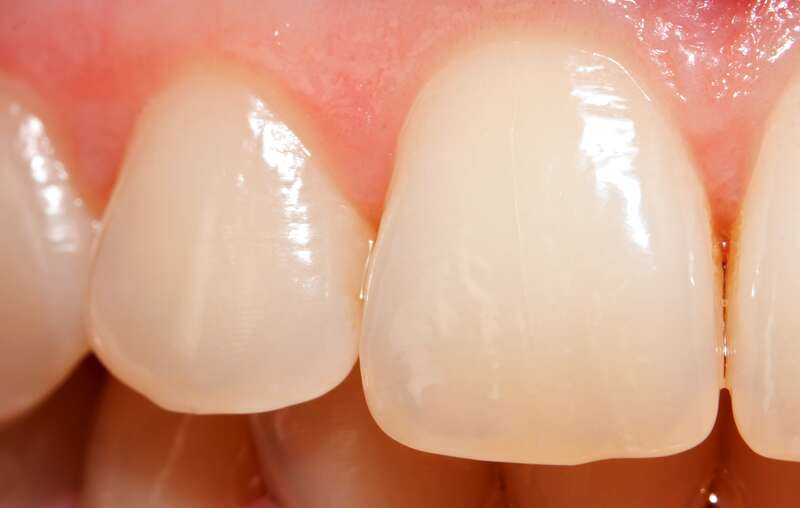
Dental Erosion
Dental erosion is a chemical process that does not involve bacteria in which a tooth’s surface loses its organic mineral content through direct acid attack. The process is erosive in nature, thus layers of the teeth are destroyed consecutively, leading to permanent loss of tooth structure and volume.
When treating dental erosion it is important first to manage to eliminate what is causing the problem.
Is dental erosion really a problem?
Depending on the extent of dental erosion, the problem can be significant. Acid wear can expose layers of teeth which may later become sensitive and painful. Furthermore, exposing dentine (second layer) can cause a generalised darker or yellow appearance of teeth, creating displeasing aesthetics. Most importantly, intrinsic causes of dental erosion may involve underlying systemic conditions.
What does dental erosion look like?

Teeth appear to be uniformly broken down or “stripped”. Gaps in between teeth become apparent due to destruction of tooth layers. Teeth appear darker/yellow and/or indentations may manifest as “dental cupping” on cusps/pits of the teeth.
What causes dental acid erosion?
Dental erosion may be caused by intrinsic or extrinsic factors. The intrinsic causes involve recurrent vomiting, gastroesophageal reflux (GERD) or drug use. Extrinsic causes may include frequent/high consumption of acidic foods or drinks (e.g. soft drinks, alcohol) and use of acidic medicines (e.g. vitamin C or aspirin). Gaseous acids or chemicals breathed frequently during work may also cause erosion.
How to treat dental erosion.
When treating dental erosion it is important first to manage to eliminate what is causing the problem. Seeking advice from your dental professional may help identifying the causes within your lifestyle. Teeth sensitivity from dental erosion can be managed through certain toothpastes and making changes to your diet. Clinically, treating dental erosion may involve restorative intervention such as fillings or cosmetic changes such as veneers/crowns.
How to prevent dental erosion
Several factors are required to prevent dental erosion.They involve; fluoride therapy (increasing acid resistance of enamel/dentine), avoiding direct contact with acids (altering diet), improving saliva volume and quantity (hydration), avoiding enamel/dentine dissolution (increasing calcium and phosphate exposure) and avoiding mechanical breakdown of teeth (correct tooth brushing techniques).
More Frequently Asked Questions About Dental Erosion
- How is dental erosion measured?The severity of dental erosion can depend on the thickness of enamel/dentine and to what extent acid exposure occurs. You may be advised to have radiographs taken to investigate how closely the nerve tissues are involved. Teeth sensitivity and pain is a good indication the second or third layers of the tooth may be exposed (dentine/pulp).
- Can dental erosion be reversed?Similar to dental decay, in its initial phase, a tooth’s surface has potential to remineralise/repair itself after an acid attack given some precautions are taken. If the process of acid exposure continues, the extent of acid wear increases and the damage becomes irreversible.
- References and Further Reading1. Lussi, A. (Ed.). (2006). Dental erosion: from diagnosis to therapy (Vol. 20). Karger Medical and Scientific Publishers.
2. Buzalaf, M. A. R., Hannas, A. R., & Kato, M. T. (2012). Saliva and dental erosion. Journal of Applied Oral Science, 20(5), 493-502.
3. Yan-Fang Ren, D. D. S. (2011). Dental erosion: etiology, diagnosis and prevention. ADA: The academy of dental therapeutic and stomatology, 2011.